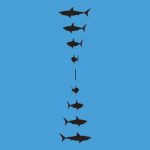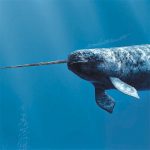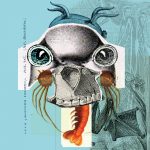Research
August 26, 2018

Sharks spin a tale
Great white sharks dive deep into the Atlantic’s clockwise-spinning warm-water whirlpools.
June 4, 2018

Rethinking drugs
Ingrid Walker wants to change the way media and government frame our perceptions about illicit drugs, and the people who use them.

No easy tusk
Marine biologist Kristin Laidre is living her dream of studying narwhals, the mysterious 2,000-pound mammals that are notoriously tricky to find.
December 15, 2017

The puzzle of aging
Building on decades of research and outreach, UW experts are piecing together new ways to live longer and better.
May 25, 2017

Micro-damaging
Overt racism has long been linked to health disparities, but what about subtle slights?
March 1, 2017

Tending to the world
Scientists, doctors and data collectors join forces for population health.
February 28, 2017
Birds’ brains
An over-the-counter health supplement can be linked linked to aggression in songbirds, suggesting health implications for people who may be using the DHEA hormone.
September 1, 2016

Deep data
In April 2015, the Axial Seamount, an active underwater volcano about 300 miles off the coast of Oregon, erupted. For the first time ever, scientists, engineers and students from the UW and around the world could watch it in real time thanks to an elaborate array of sensors they installed a year earlier.
June 1, 2016

Nordic Noir
Scandinavian Studies Professor Andy Nestingen shares his research into the genre and how it contrasts with American Noir’s heroes and villains.

Urban evolution
The UW's Urban Ecology Research Lab studies how species change in response to cities.
March 1, 2016

Test driven
Here, we present the tales of two clinical trials of technology that one day could alleviate suffering and improve lives for the hundreds of thousands of people suffering from severe heart problems and kidney failure.
December 1, 2015

'Scarface' found
A team of scientists has identified a new species of “pre-mammal” based on fossils unearthed in Zambia’s Luangwa Basin in 2009. Its discoverers include Christian Sidor, UW professor of biology and curator of vertebrate paleontology at the Burke Museum.

Sweet gratitude
Gratitude is universally considered a social good—the warm feeling that results from a kindness received. But it can have a dark side: It can impel us to eat more sweets, according to new research by Ann Schlosser, professor of marketing at the Foster School of Business.
September 1, 2015

High volume
Recordings by current and former UW researchers in fjords show that melting at glacier edges in the narrow rock-edged canyons are some of the noisiest places in the sea.

Cling like a fish
Scooting around in the shallow, coastal waters of Puget Sound is one of the world’s best suction cups. It’s called the Northern clingfish, and its small, finger-sized body uses suction forces to hold up to 150 times its own body weight.

Space explorers
Fifty years is no time at all for a universe that dates back 13.8 billion. But for those who study the sky, the past five decades have changed everything.
June 1, 2015

Blood stancher
An injectable polymer could keep soldiers and trauma patients from bleeding to death.


